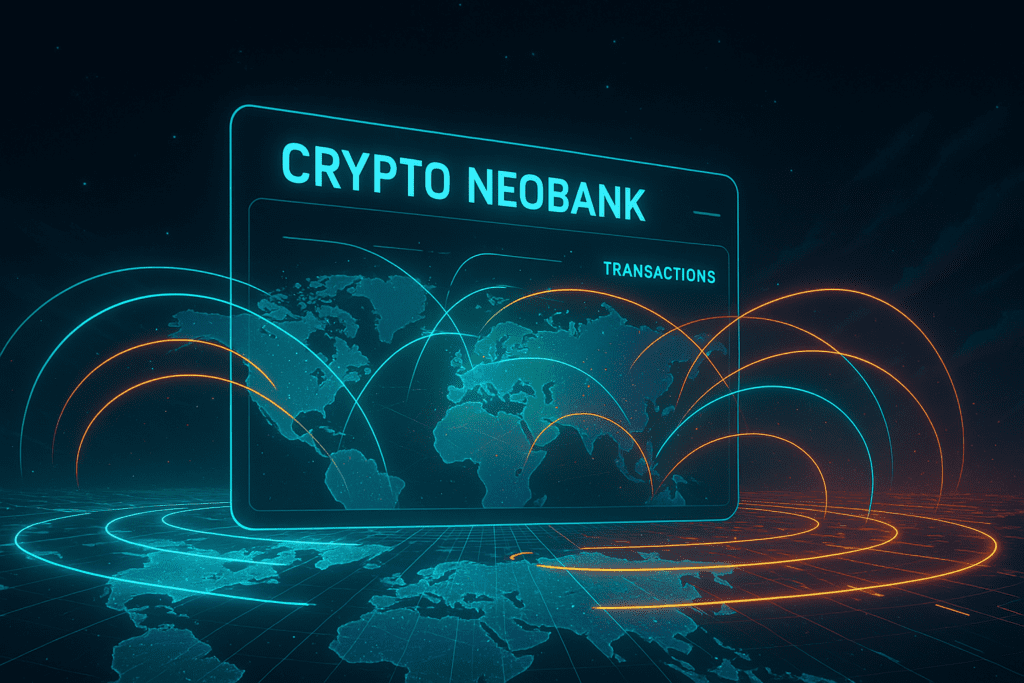Crypto banking explained for beginners: how banks integrate blockchain, crypto accounts, custody, and the future of digital finance.
Table of Contents
- Introduction
- What Crypto Banking Means in 2025
- How Traditional Banks Integrate Crypto
- Crypto Neobanks and Their Advantages
- Risks, Limitations, and Regulatory Challenges
- Forecast: What Crypto Banking Will Look Like by 2030
- Conclusion
Online advertising service 1lx.online
Introduction
Crypto banking solutions are among the fastest-growing innovations in digital finance. As cryptocurrency and traditional finance intersect “on the topic of the article,” beginners need a clear understanding of how banks adopt crypto, what services appear, and how this hybrid financial world works.
Today, crypto banking is no longer futuristic — it is already becoming a part of global fintech infrastructure.
What Crypto Banking Means in 2025
Crypto banking refers to financial services where digital assets and traditional money coexist within one ecosystem. This includes crypto-friendly banks, neobanks, custodial institutions, and fintech platforms that allow users to store, spend, convert, lend, and borrow crypto.
Crypto banking bridges two worlds:
- traditional regulated finance
- blockchain-driven decentralized assets
For beginners, understanding this connection “on the topic of the article” is essential before entering digital finance.

Online advertising service 1lx.online
How Traditional Banks Integrate Crypto
Many global banks are no longer ignoring crypto — instead, they are integrating it into official financial infrastructure.
Here are the most common ways.
1. Custody Services
Online advertising service 1lx.online
Banks offer safe storage for cryptocurrencies, protected by:
- insurance
- institutional-grade encryption
- cold storage systems
- regulatory compliance
This is ideal for institutional investors, corporations, and beginners who want regulated protection.
2. Crypto-Backed Loans
Banks now offer loans where Bitcoin, Ethereum or stablecoins act as collateral.
Advantages:
- retain ownership of crypto
- instant approval
- no credit score checks
- lower interest rates
This turns crypto into a usable financial asset “on the topic of the article.”
3. Fiat–Crypto Accounts
A growing number of banks provide:
- dual accounts (USD/EUR + BTC/ETH)
- instant swaps
- crypto debit cards
- cross-border remittances
This is the foundation of mass adoption.

Crypto Neobanks and Their Advantages
Crypto neobanks operate fully online and are built with blockchain technology at the core.
They differ from traditional banks by offering:
- zero paperwork
- instant onboarding
- crypto-natives tools
- global financial access
1. Full Digital Access
Crypto neobanks allow:
- buying and selling crypto
- using digital assets for payments
- automated staking
- multi-chain wallets
- cross-border settlements
Everything works through a mobile app.
2. Instant Transfers
Blockchain-based transfers allow:
- settlement in seconds
- low fees
- 24/7 availability
- global reach
This eliminates traditional banking delays.
3. Global Availability
Crypto neobanks are accessible worldwide, even in regions where:
- banks restrict crypto
- fiat systems are unstable
- cross-border transfers are limited
This makes them attractive for freelancers, digital nomads, and startups.

Risks, Limitations, and Regulatory Challenges
Despite rapid development, crypto banking carries risks:
- regulatory uncertainty
- dependency on blockchain security
- KYC/AML restrictions
- potential asset freezing
- centralization of custody
- high volatility of collateral
Beginners should understand these risks “on the topic of the article” before trusting unregulated platforms.
Forecast: What Crypto Banking Will Look Like by 2030
By 2030, crypto banking will transform:
- CBDC integration: central bank digital currencies will connect directly to wallets
- AI-powered risk management
- global interoperability between banks and blockchains
- crypto mortgage and insurance products
- institutional DeFi layers
- bank-issued tokenized assets
Crypto banking will become the default standard for digital finance worldwide.
Conclusion
Crypto banking solutions mark a turning point in global financial systems. As cryptocurrency and traditional banking converge “on the topic of the article,” beginners gain new opportunities for secure storage, fast payments, lending, and global financial inclusion.
This hybrid future brings both advantages and risks — but it is already becoming a reality in 2025.
Our creator. creates amazing NFT collections!
Support the editors - Bitcoin_Man (ETH) / Bitcoin_Man (TON)
Pi Network (Guide)is a new digital currency developed by Stanford PhDs with over 55 million participants worldwide. To get your Pi, follow this link https://minepi.com/Tsybko and use my username (Tsybko) as the invite code.
Binance: Use this link to sign up and get $100 free and 10% off your first months Binance Futures fees (Terms and Conditions).
Bitget: Use this link Use the Rewards Center and win up to 5027 USDT!(Review)
Bybit: Use this link (all possible discounts on commissions and bonuses up to $30,030 included) If you register through the application, then at the time of registration simply enter in the reference: WB8XZ4 - (manual)
